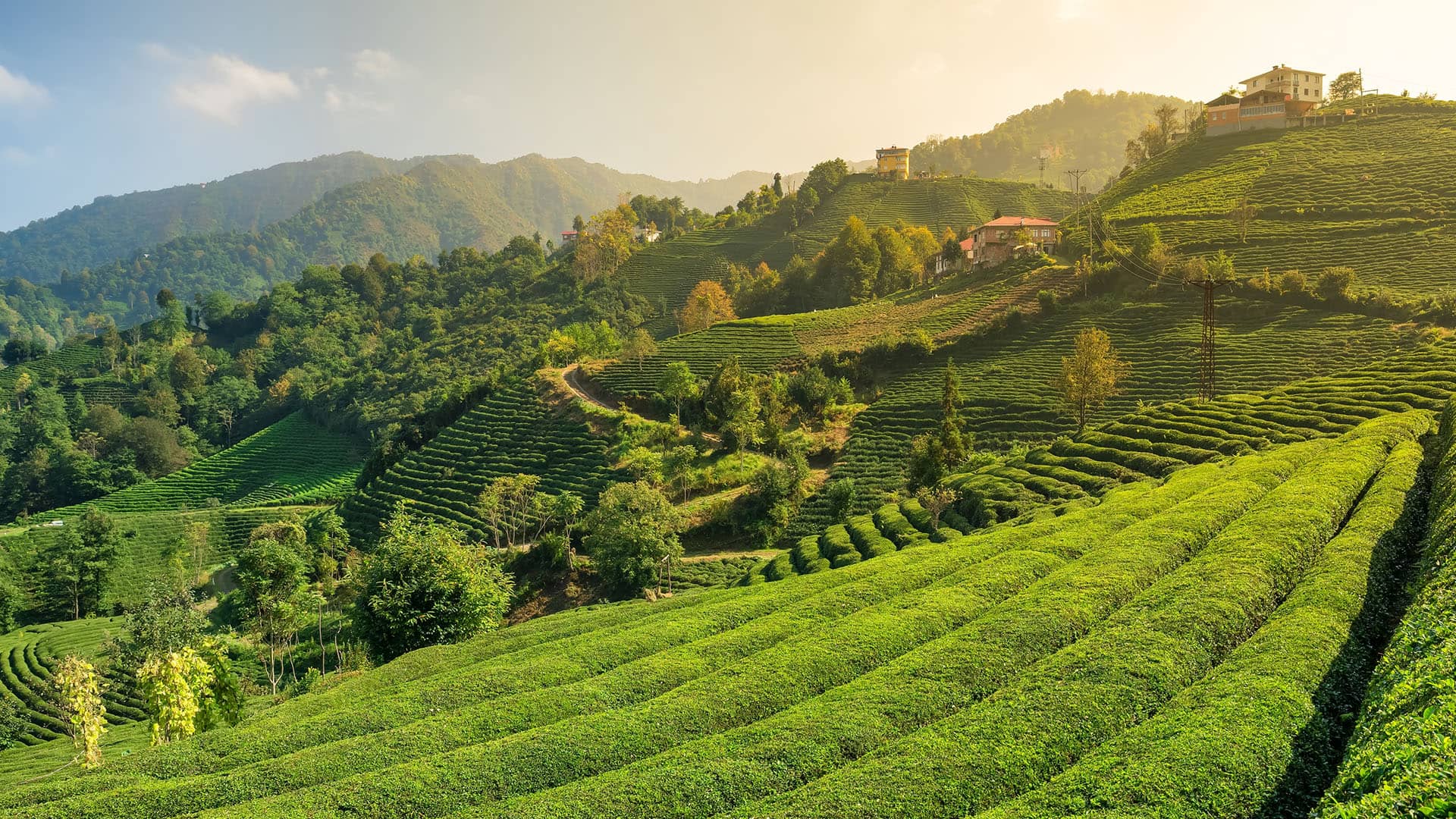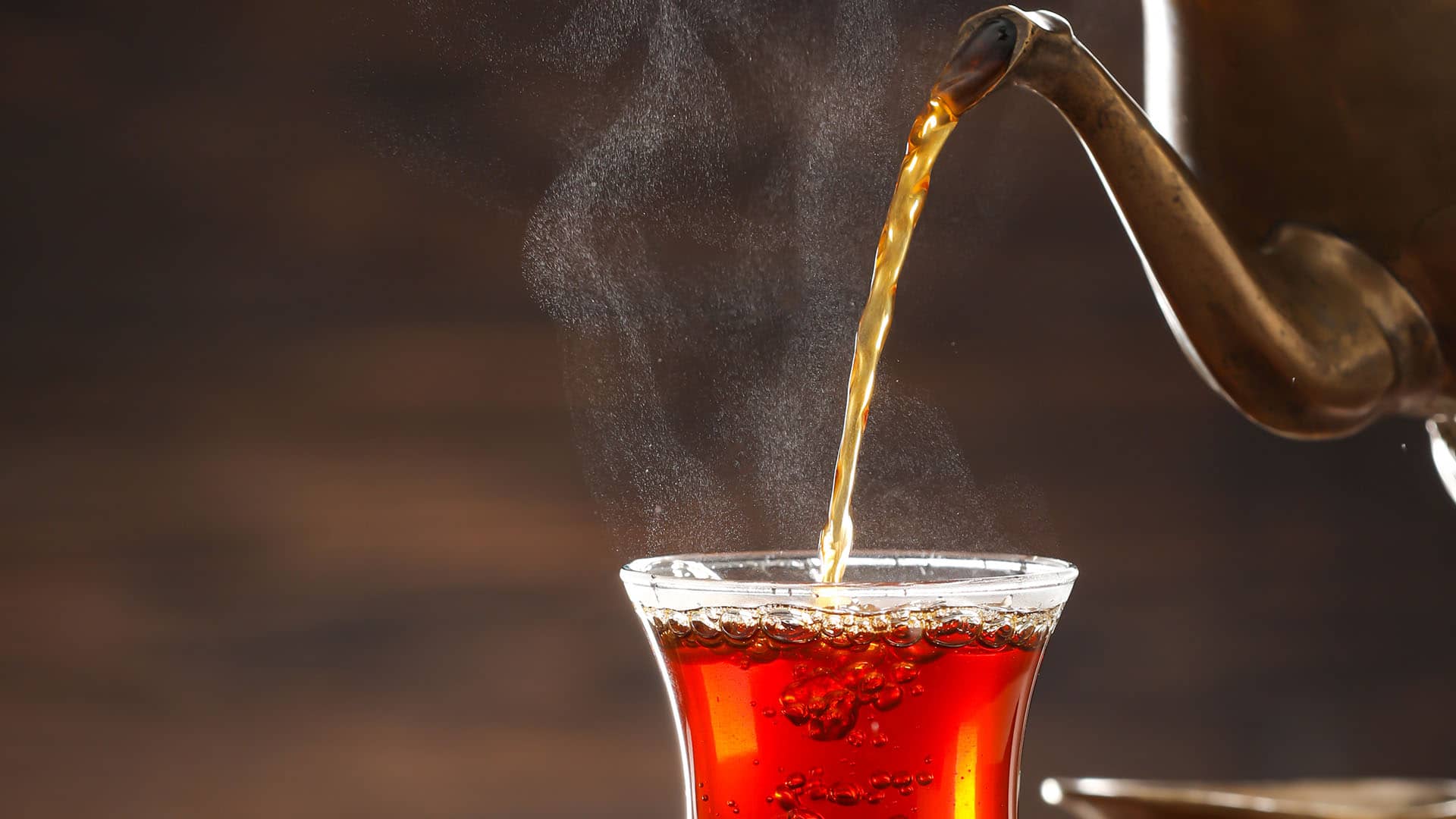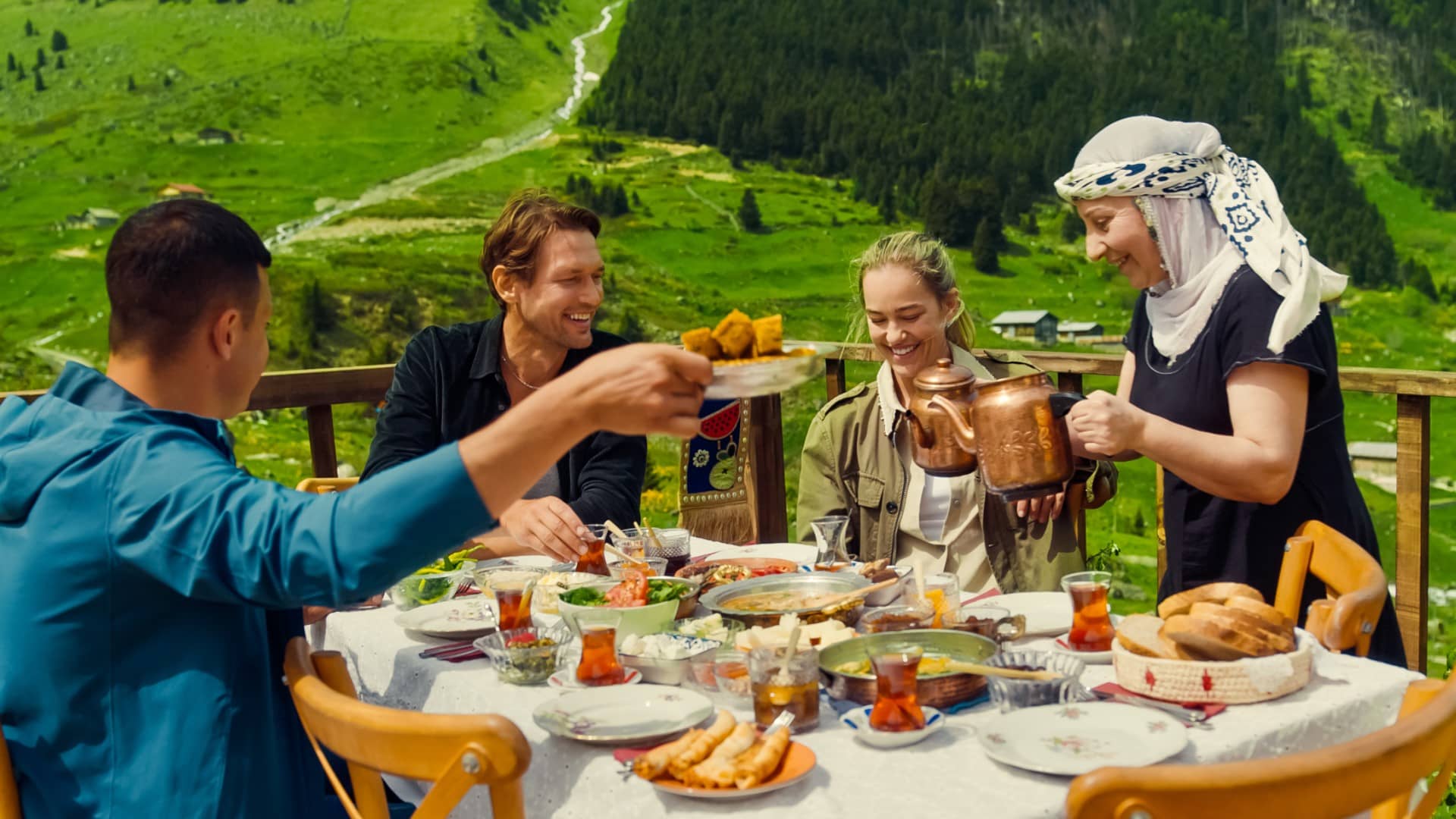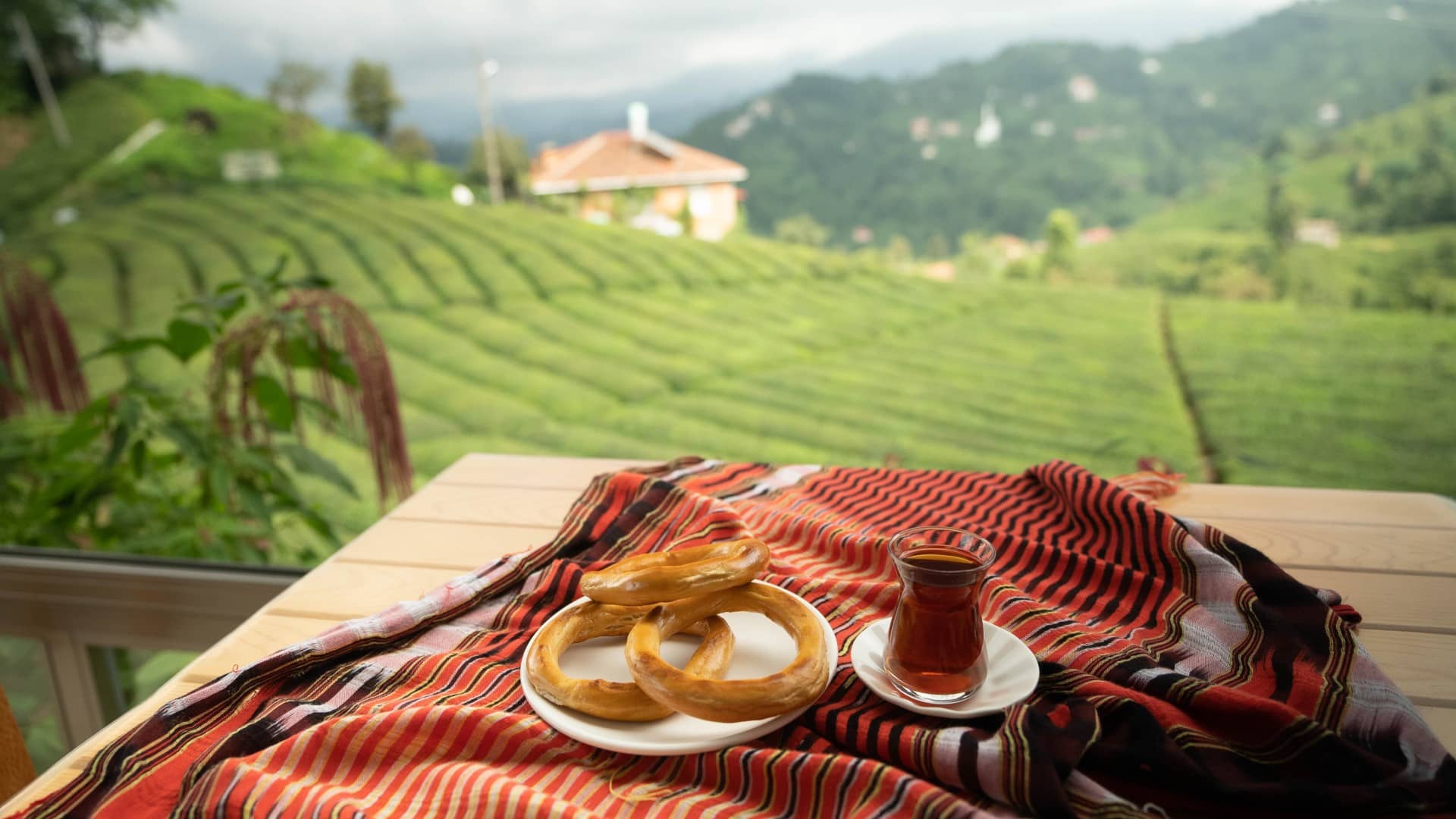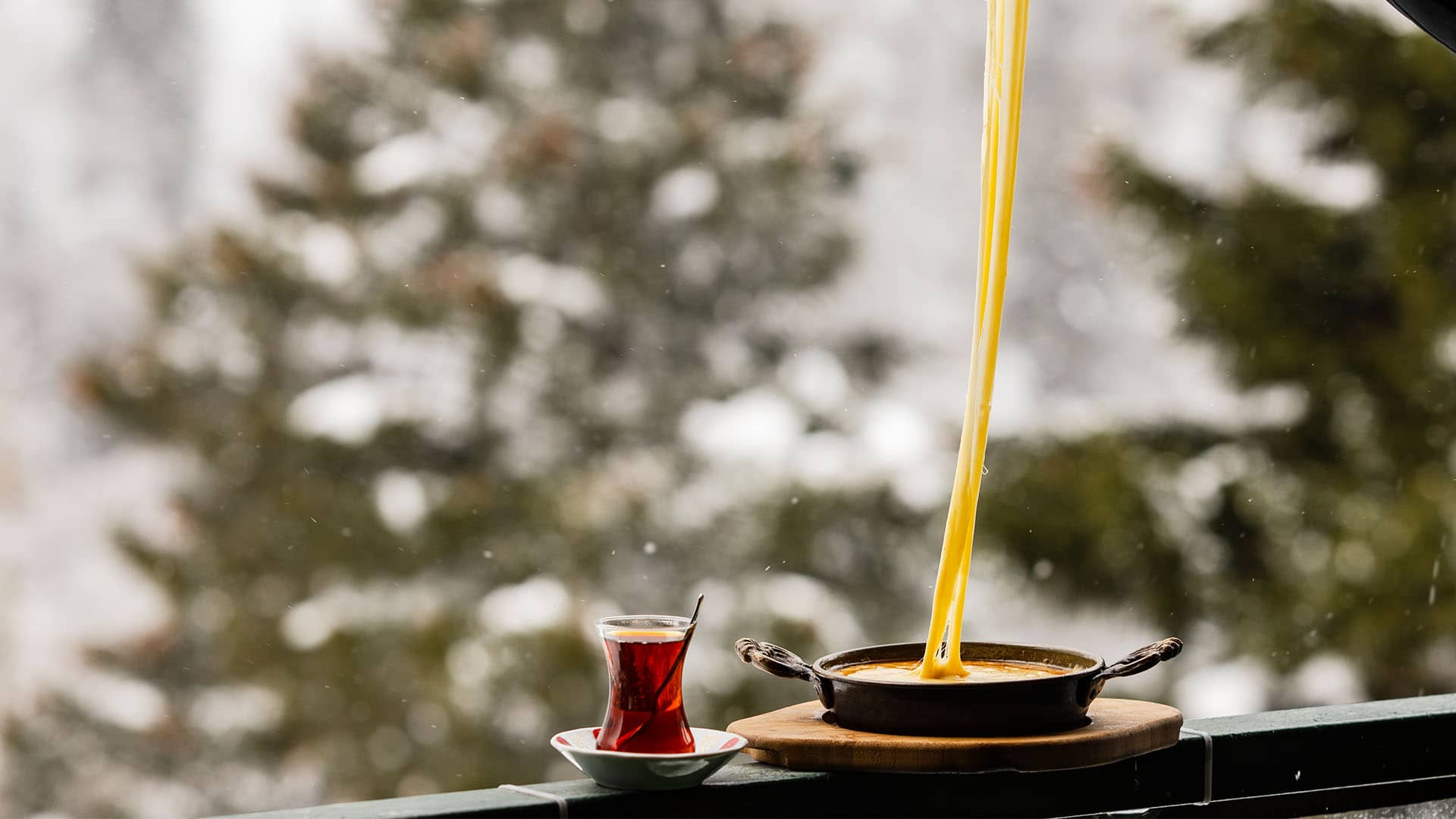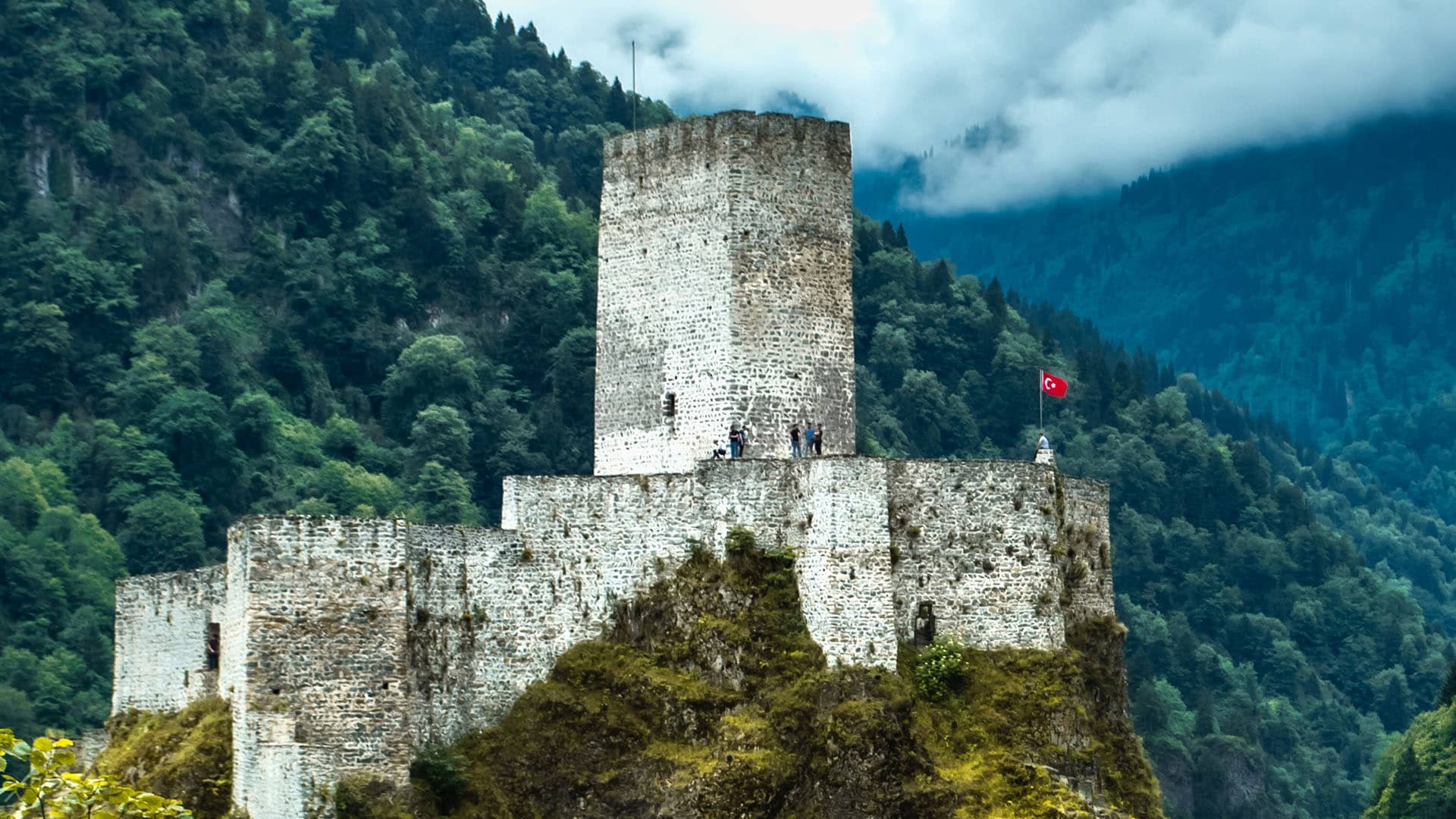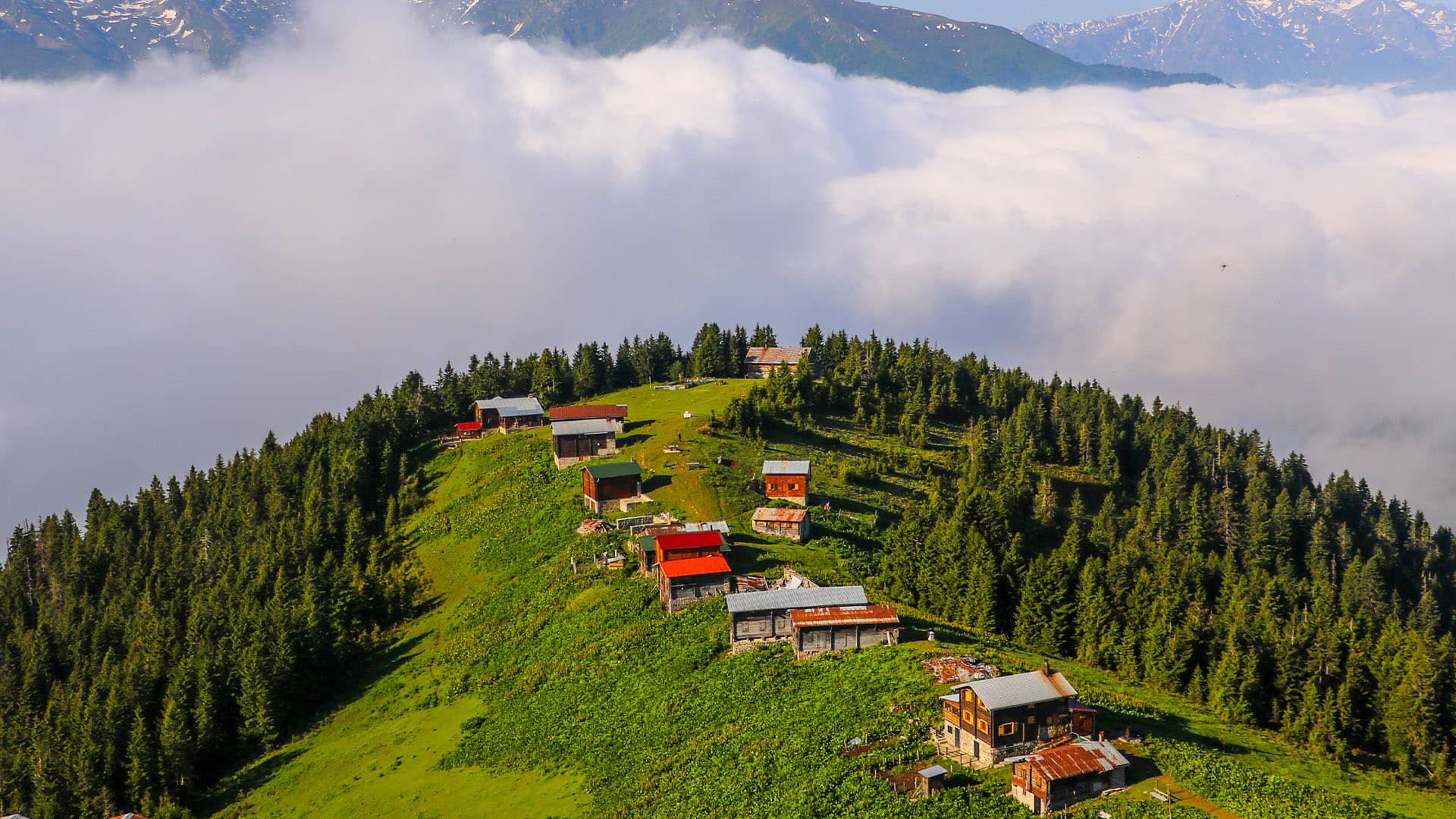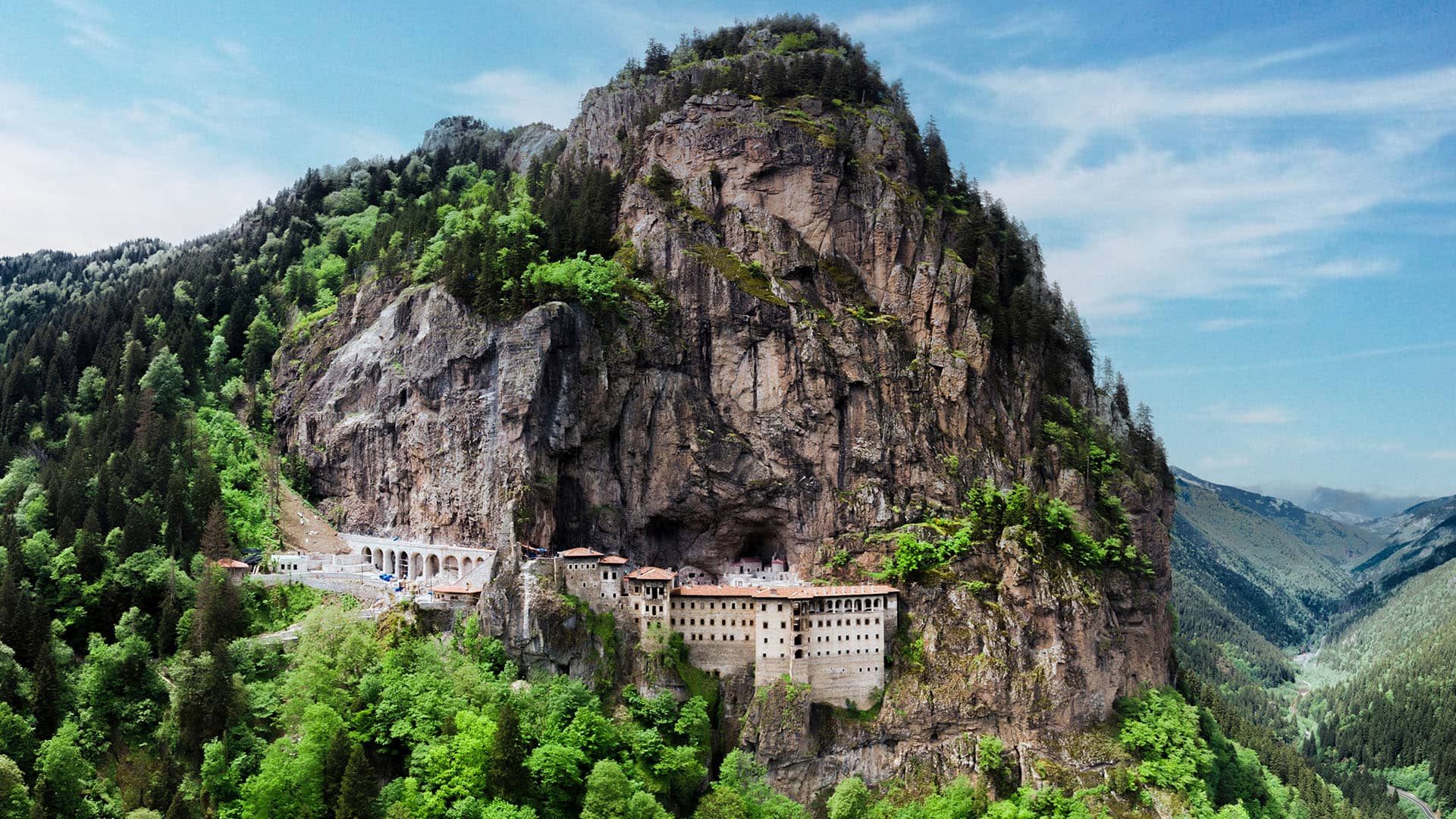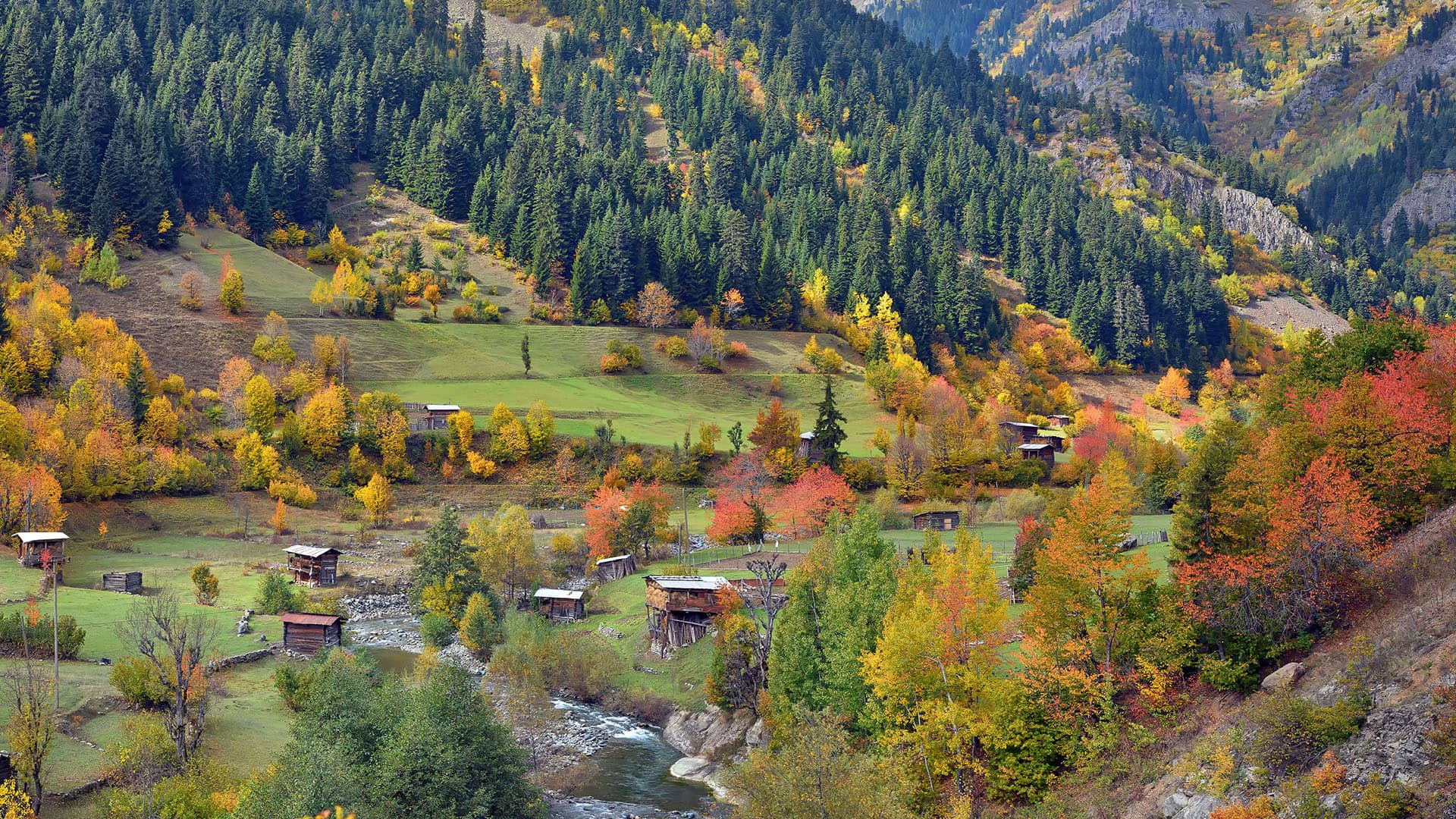

experiences
Tea Route
To tea or not to tea? That is NOT the question in Türkiye; because, in this country, tea is much more than a simple beverage. It is an inseparable part of the local lifestyle, deeply ingrained in Turkish culture.
History of Tea
Before the arrival of tea in 1894, the Ottomans brewed various herbs and consumed them like tea. Tea cultivation began in Türkiye towards the end of the Ottoman period and gained momentum during the Turkish Republic era.
The state’s experimental tea production towards the end of the 19th century led to the establishment of the first tea factory in Rize in 1946, which was an important turning point for tea consumption in these lands.
Rize’s fertile soil, humid subtropical climate and high precipitation levels are ideal for tea cultivation. Other cities where tea cultivation is prominent include Trabzon, Giresun, and Artvin in the Black Sea region. Thanks to snowy winters and cool summers in this part of Türkiye, tea can be produced without pesticides, making it completely natural and organic. This is one of the most important factors distinguishing Turkish tea from those worldwide.
Tea can be harvested in spring, summer, and autumn several times a year. Tea leaves are handpicked by locals who arduously work in the fields to collect the ripe tea buds that are good for picking. It requires a great deal of skill and mastery.
Brewed to Perfection: Turkish-style tea
Tea brewing is an art. Just like cleaning your brush and adjusting your canvas before painting, you need to prepare before practising the art of brewing Turkish tea.
First and foremost, having a teapot specifically designed to brew Turkish tea is important. Commonly known as çaydanlık, it consists of two kettles stacked on top of each other. The top part is smaller and used for brewing tea, while the bottom is only for boiling water.
The ingredients you need to brew the perfect Turkish tea are 10 dessert spoons of tea leaves, 700 ml. water, and, optionally, some sugar to sweeten your cup. This measurement will give you a teapot full of tea which makes about 15 to 20 cups of tea.
For a perfect cup of Turkish tea, bring the water to a boil and pour it on the upper decker of the teapot. Then refill the bottom part and wait until it comes to a boil as well.
This is a much-needed time to let the hot water infuse the tea and make magic happen. After about 5-6 minutes on low heat, you can check if loose tea leaves are still on the surface. Once all the leaves sink to the bottom, the tea is brewed to perfection. Keep it on low heat; you will need hot water to dilute the brew with each cup.
Tea Serving Culture
Turkish tea is served in specially designed, elegant glasses that remind you of tulips. The glass is slim and narrow on the mid-part and wider on the top. This design lets the tea cool down faster on the top while keeping the rest of the glass warm. The wide part is the perfect spot to handle your hot tea without burning yourself.
The perfect colour of Turkish tea is ruby red. The colour you get on your cup depends on your preference. If you like the bitter taste, go for a deep dark tea. The more you dilute it with hot water, the lighter the colour gets and the less bitter it tastes.
In Rize by the Black Sea, the homeland of Turkish tea, locals swear to drinking tea with no sweeteners. However, if the bitter taste of tea is not for you, you can always opt for a teaspoon or two of table sugar or other types of sweeteners.
In some regions of Türkiye, mainly Erzurum on the East, there is a special type of sweetener called Kıtlama that is conveniently placed under the tongue to melt in the mouth as you take a sip. Alternatively, you can pair your cup with a delicious, traditional Turkish dessert like Baklava or Kadayıf for extra flavour.
Tea O’Clock
Tea can be consumed at any time of the day. If you are on the go, start your day with a cup of Turkish tea, sesame seed rolls called Simit, and creamy cheese to accompany. In the Black Sea region, where the highlands are so breathtaking and time is plenty, you can go for a full table of Turkish breakfast spread featuring regional breakfast delicacies such as Kuymak, all sorts of local cheese, olive, and jam varieties, fresh sourdough bread baked in stone ovens with woodfire, and a glass of ruby red Turkish tea. What an unforgettable experience…
Turkish tea is also the best accompaniment to desserts! Whether it is the traditional types with syrup such as Baklava, Künefe, or Ekmek Kadayıfı, or the worldwide classics like waffles or cookies.
There are special tea gardens called çay bahçesi, where you can enjoy a delicious cup of tea taking in the fresh air. It is also a classic to sip your Turkish tea by the Bosphorus in İstanbul. There are countless shops and cafes to have a bite with your cup with a gorgeous backdrop of the Bosphorus.
Turkish Tea Route
On your quest for the best cup of Turkish tea, you are invited to a journey in the Eastern Black Sea. The route goes through several significant cities, including Rize, Trabzon, and Artvin.
Rize
Welcome to the Turkish capital of tea! 66% of the country’s tea production takes place in this city by the Black Sea. Here, it is never too early or late to have a cup. With its pristine nature, incredible plateaus, beautiful historical buildings, delicious tea and gastronomy, and mountain biking, hiking, birdwatching, trekking, mountaineering, jeep safari, rafting, canoeing, kayaking, skiing and heli-ski options, Rize promises a travel experience that will forever be etched in your memory.
Ziraat Botanical Tea Garden
Down for a bird’s eye view of Rize while sampling a cup of freshly brewed Turkish tea? This lush green, beautiful botanical garden on a hilltop overlooking the city’s skyline is the perfect place to experience it. There are plenty of seatings around the tea plantation, offering a relaxing day in serene nature.
Çamlıhemşin
The town of Çamlıhemşin is home to several top sights to visit for outdoor adventure lovers including Pokut plateau, Ayder plateau, Huser plateau where you can immerse yourself in calming nature, take nature walks, go hiking up the mountains, enjoy traditional Black Sea style life, sample local dishes, or visit Palovit waterfalls for instant refreshment. Fırtına Creek is perfect for rafting enthusiasts before visiting Zilkale nearby.
Zilkale
Originally meaning “the lower castle”, Zilkale is anything but low. Located on a steep rock mass 750 meters above sea level, this medieval castle is believed to have been actively used by the Ottoman Empire until the mid-1800s to surveil the caravan route.
Mount Kaçkar & Mount Ovit
Visiting Rize in winter must be on your bucket list for a warm glass of tea and a thrilling getaway, mountaineering, skiing and snowboarding your way down the slopes of the Kaçkar and Ovit mountains. Heliskiing is also available for those looking to add a glimpse of adrenaline to their journey.
Anzer Yaylası ve Balı
Located 54 km off of Rize centre, Anzer plateau is a popular stopover for those looking to sweeten their cup of tea with the world’s most unique honey: Anzer Honey. Made with 500 endemic plants of the region, this honey is loaded with anti-oxidant properties that are believed to cure many diseases, including cancer.
Trabzon
Trabzon is the centre of culture and natural richness in the Eastern Black Sea Region. Located on the ancient Silk Road, it has been the meeting point of religions, languages, and cultures for centuries.
The city also played a significant role in history due to its port. Today, Trabzon continues to be an important trade and cultural centre ripe with museums, monasteries, mosques, tombs, caravanserais, baths, covered bazaars, fortification walls, spectacular examples of civil architecture, and a fantastic landscape.
Trabzon offers some of the most authentic breakfast experiences in the region, accompanied by tasty Turkish tea. The city is where the famous Vakfıkebir bread originated from. Sample a slice of this delicious bread baked on a woodfire, along with the regional breakfast delicacy named Kuymak, local cheese varieties, and of course, a glass of Turkish tea!
The city is home to some iconic destinations that are an absolute must-see. Nestled on a steep cliff at an altitude of 1200 meters above the sea, the historical Orthodox Sümela monastery is of major significance for its gorgeous frescoes depicting the story of Jesus and the Virgin Mary.
For nature enthusiasts, the must-visit places include the landslide lake called Uzungöl, Altındere Valley National Park, filled with pine trees and soothing creeks, and Kadiralak Plateau, renowned for its blue starflowers that bloom in the spring. Foodies should keep an eye on Sürmene where locals took the delicious Turkish Pide to another level with butter, cheese and egg cracked in the middle, naming it Sürmene Pidesi.
Handmade knives and swords crafted by local artisans are also great as souvenirs.
Artvin
Artvin is a symphony of colours! Home to countless shades of green, green fields of tea is just another colour in this symphony. This authentic, culturally-rich and diverse city has many historical monuments, including monasteries, churches, castles, mosques, bridges and mansions. With an awe-inspiring climate, flora and fauna, valleys, canyons, and lakes, Artvin offers countless alternatives for nature aficionados.
Hiking, skiing, snowboarding in the Kaçkar and Karçal mountains, trekking in Kafkasör plateau and Hatila Valley National Park, camping by the Cehennem Deresi (Hell’s Creek) canyon and rafting at Çoruh River are some of the most adventure-filled experiences to have in Artvin. After all these exhilarating escapades, it Is always a great idea to top off the day with a cup of Turkish black tea to revitalize you.
Did you know?
- The biggest tea cup in Guinness World Records is in Rize. It is a 30-meter tall, 7-storey building that serves as a shopping mall where you can buy tea, tea products, tea cups and equipment, as well as handmade copper items, regional delicacies and more.
- Türkiye is the number one country in tea consumption, with 3.16 kilos per person yearly.
- Drinking Turkish tea with a slice of lemon helps with digestion and immunity.

